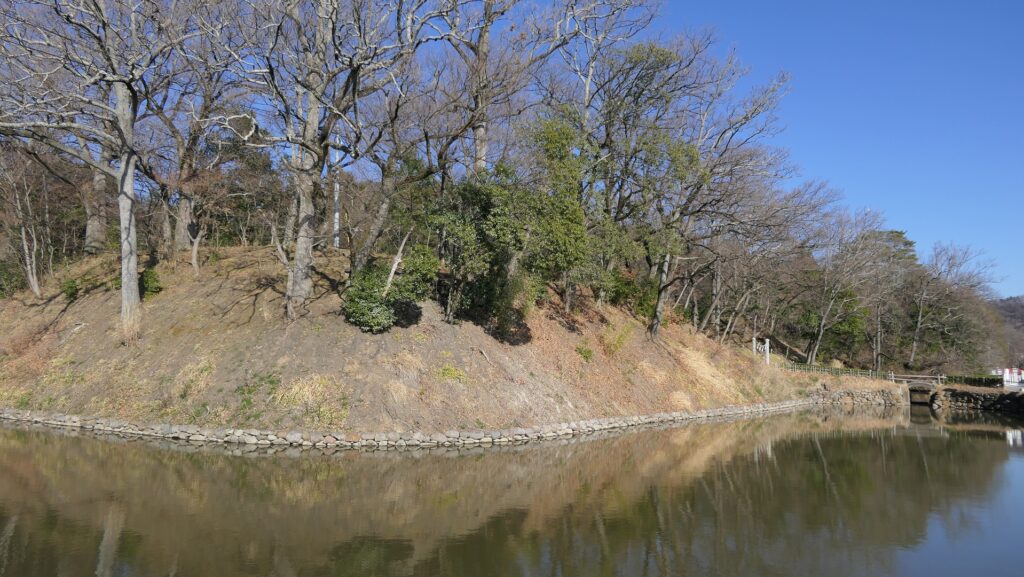Location and History
Nobutora Takeda built Castle as Governor’s Residence
Takeda Clan Hall, which is also called Tsutsujigasaki Hall, was located in what is now Kofu City, the Prefectural Capital of Yamanashi Prefecture. I would say the hall is the origin of Kofu City. The Governor of Kai Province (now Yamanashi Pref), Nobutora Takeda first built the hall in 1519. The hall was not only for the official residence of the governor, but also for the home base of the Takeda Clan, so it is classified as one of the castles in Japan.

Its location had mountains behind on the north, and an alluvial fan spread down on the south from around there. This meant Nobutora was able to overlook the castle town and the area around. He built his hall on a square enclosure which was nearly 200m on one side, surrounded by earthen walls and water moats. This was a typical style of the residences for governors in Japan at that time, emulating the style of Shogun’s palace in Kyoto. In addition, he built another castle on a mountain about 2km away from the hall on the north, called Yogaisan Castle, for emergency. For example, he and his family could escape from the hall to the mountain castle when a battle happened. Indeed, his son, Shingen Takeda was born at Yogaisan Castle during the battle between Nobutora and the Imagawa Clan in 1521. The network of these castle was defensive enough to maintain their safety during that time.
The location of the castleShingen Takeda’s saying related to Castle
Shingen, who was one of the greatest warlords in Japan, developed the hall as well, adding the West Enclosure for residences of his family and relatives on the west of the center enclosure in 1551. Apart from that, the Umadashi system, which refers to a round shaped sticking out defensive position, was built in front of the Main Gate on the east. It is also said that the hall for Shingen’s mother was built on the north. Each enclosure was surrounded by nearly 10m high earthen walls and over 5m deep water moats.

However, the hall seems to be misunderstood by many people. This comes from Shingen’s saying “The people are the castle, the stone walls, and the moats…” recorded in the military science book called Koyogunkan in the 17th Century of the Edo Period. The sentence means it is more important to win the people’s hearts than to build a strong castle, but many people later have been thinking it shows the reason why Shingen only had such a small castle in comparison to other castles for other warlords such as Nobunaga Oda and Kenshin Uesugi.

Takeda Clan Hall itself is much smaller than Nobunaga’s Azuchi Castle or Kenshin’s Kasugayama Castle, but it is because their periods or situations were different. In the case of Shingen, his hall started from the governor’s residence. It was common for governors to live in such a hall at that time. The Takeda Clan added defense systems like the network of the castles and Umadashi to deal with their situation. It was enough for them.

Katsuyori Takeda moved to another
In 1582, Shingen’s son, Katsuyori Takeda decided to move his home base to a large new castle called Shinpu Castle, because the situation changed. Katsuyori was threatened by Nobunaga, so Katsuyori needed a stronger and larger castle than the Takeda Clan Hall which was once abandoned. Katsuyori was unfortunately beaten by Nobunaga before the hall was used by the Oda Clan and the Tokugawa Clan again. It was finally abandoned in 1590, when the Tokugawa Clan built Kofu Castle near the hall.


